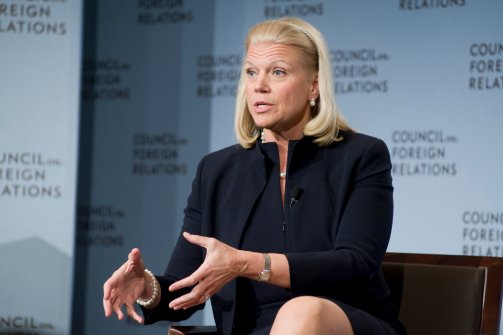IBM is poised for a new generation of technology change in the coming decade, chief executive Virginia Rometty told The New York Times on Sunday ahead of the company’s annual investor meeting on Wednesday.
The company currently faces a “rocky time”, she said, after IBM last month reported its lowest quarterly revenue in five years, and faces challenges from the growth of public cloud services, which are eating into its sales of hardware, software and services for enterprise data centres. IBM is the largest supplier of corporate data centre technology, and as such has the most to lose to cloud-based competition from the likes of Amazon, Microsoft, Google and Salesforce.com.

Asset sales
However, some of IBM’s revenue declines have been intentional, as the company sells off major parts of its business, including the currently in-progress sale to Lenovo of its x86 server business for $2.3 billion (£1.4bn), according to Rometty.
Since 2000, IBM has sold off businesses that collectively generated $16bn in sales, including the sale to Lenovo of its PC business, and since 2012, when Rometty took over as chief executive, it has sold units worth $2bn in revenues, a figure that will rise to $6bn this year with the finalisation of the sale of the server unit, Rometty reportedly said.
“We don’t want empty calories,” she told the Times. “So when people keep pushing us for growth, that is not the No. 1 priority on my list.”
She highlighted IBM’s major investments in emerging areas such as cloud computing, including the $2bn acquisition in June of SoftLayer, as well as investments in big data analytics worth $24bn since 2005, and $1bn in the creation of a business unit centred around its “Watson” artificial intelligence project, which will also be offered as a cloud service.
Cloud growth
IBM has reported that its cloud business grew 69 percent last year, to $4.4bn, but the majority of those revenues still come from private clouds operated by enterprises themselves, rather than public clouds such as those operated by Amazon, Google and others.
The company said in January it is investing $1.2bn in “public cloud” data centres, aiming to have 40 cloud centres in 15 countries by the end of this year.
Do you know all about Big Data and large-scale analytics? Take our quiz!





